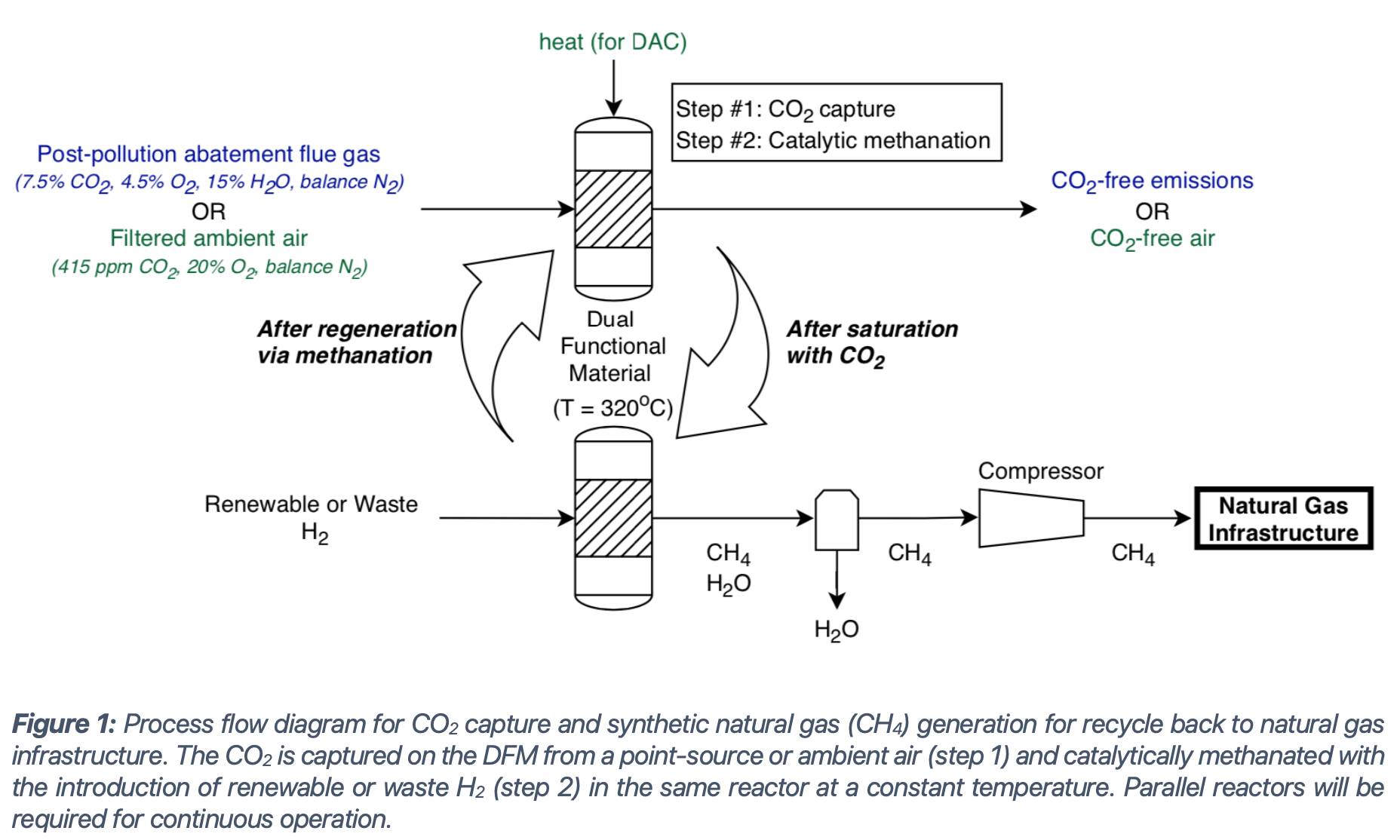2020 Virtual AIChE Annual Meeting
(36a) Dual Function Materials for Point-Source and Direct Air Capture of CO2 and Combined Conversion to Fuel
DFM is able to adsorb the dilute CO2 (~400 ppm) from ambient filtered air which can be subsequently hydrogenated to methane. Because DAC technologies have free-range of geography, this technology can be aptly placed at emerging power-to-gas facilities to eliminate the requirement of transporting H2. While an external heat source would be needed to achieve the operating temperature of 320°C in the DAC scenario, the temperature can be supplied by renewable H2 sources, which would also be present at power-to-gas facilities (i.e. PEM fuel cell). In addition, because the adsorbent saturation time is long for DAC, the kinetics for methanation need not be as rapid as in the point-source case, allowing flexibility to operate the entire system at lower temperatures to minimize energy requirements. Simple desorption of the adsorbed CO2 is also a viable way to regenerate the DFM, producing a stream of CO2 for other utilization pathways or storage.
